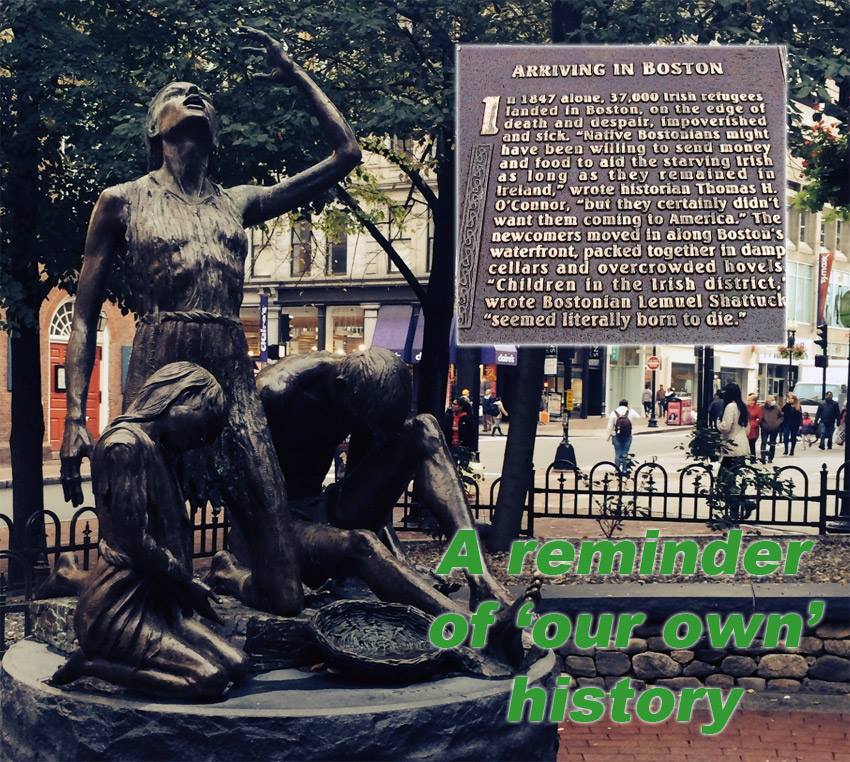Over 30 years of anarchist writing from Ireland listed under hundreds of topics
The Boston Famine Memorial - A reminder from 'our own' history
 The inscription on the memorial to the Irish 'Famine' in Boston serves to remind us of much we should not have forgotten and how shameful some of our words today must sound to the millions who suffered then.
The inscription on the memorial to the Irish 'Famine' in Boston serves to remind us of much we should not have forgotten and how shameful some of our words today must sound to the millions who suffered then.
In 1847 alone, 37,000 Irish refugees landed in Boston, on the edge of death and despair, impoverished and sick. “Native Bostonians might have been willing to send money and food to aid the starving Irish as long as they remained in Ireland,” wrote historian Thomas H. O’Connor, “but they certainly didn’t want them coming to America.” The newcomers moved in along Boston’s waterfront, packed together in damp cellars and overcrowded hovels. “Children in the Irish district.” wrote Bostonian Lemuel Shattuck, “seemed literally born to die.”
In a frantic attempt to outwit death, nearly two million people fled Ireland. “Many thousands of peasants who could still scrape up the means fled to the sea, as if pursued by wild beasts, and betook them-selves to America.” wrote Irish patriot John Mitchel. The emigrants boarded vessels so unseaworthy they were called Coffin Ships. So many passengers died at sea that poet John Boyle O’Reilly called the Atlantic Ocean upon which they ourneyed “a bowl of tears.”
Despite hostility from some Bostonans and signs of NO IRISH NEED APPLY, the Famine Irish eventually transformed themselves from impoverished refugees to hard-working, successful Americans. The leadership of Boston Irish like John Boyle O’Reilly, Patrick Collins and Richard Cardinal Cushing culminated in a descendent of the famine generation, John F. Kennedy, becoming the nation’s first Irish Catholic President in 1960. Today 44 million Americans claim Irish ancestry, leading the nation in Medal of Honor winners, and excelling in literature, sports, business, medicine, medicine and entertainment.

